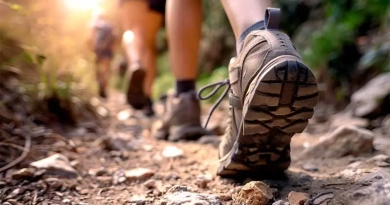
What are the six basic survival skills?
The sun had just begun its descent, casting long shadows across the dense forest floor. The air was filled with the scent of pine and the distant sound of a babbling brook. As I walked deeper into the wilderness, I couldn’t help but reflect on the fundamental question that every adventurer and survivalist must face: “What are the six basic survival skills?” Understanding these skills is not just a theoretical exercise; it’s a lifeline in the unpredictable embrace of nature.
The question of the six basic survival skills is central to anyone venturing into the wild. These skills are the foundation upon which survival strategies are built. They are the essential tools that can transform a potentially fatal situation into a manageable challenge. The question itself is straightforward, but the answers are layered with intricacies and nuances that one must grasp to survive and thrive in the wilderness.
To address this question, we must first identify and understand each of the six basic survival skills. Each skill presents its own set of challenges and obstacles that need to be navigated effectively.
1. Maintaining a Positive Attitude
Options and Obstacles: The right mindset is perhaps the most critical survival skill. Panic and fear can cloud judgment and lead to fatal mistakes. Staying calm and focused is essential. The obstacle here is the natural human response to fear and stress, which can be overwhelming in survival situations.
Solution: To maintain a positive attitude, practice stress management techniques like deep breathing, visualization, and mindfulness. These methods can help you stay calm and focused, making it easier to make rational decisions under pressure.
2. Building a Shelter
Options and Obstacles: Shelter protects you from the elements, such as extreme cold, heat, or rain. Without proper shelter, you risk hypothermia, heatstroke, or exposure. The challenge lies in constructing a shelter with limited resources and time.
Solution: Learn how to build various types of shelters using natural materials available in your environment. Common shelter types include lean-tos, debris huts, and snow caves. Carrying a tarp or emergency blanket can also provide immediate protection until a more substantial shelter can be constructed.
3. Finding and Purifying Water
Options and Obstacles: Water is essential for survival, with humans only able to survive about three days without it. The obstacles include locating a reliable water source and ensuring the water is safe to drink.
Solution: Familiarize yourself with different water sources and purification methods. Techniques like boiling, using purification tablets, or employing a portable water filter are essential. Additionally, learn how to locate water in various environments, such as by finding dew, collecting rainwater, or following animal tracks to a water source.
4. Creating Fire
Options and Obstacles: Fire is crucial for warmth, cooking food, boiling water, and signaling for help. The challenge is starting a fire without modern tools, especially in wet or windy conditions.
Solution: Practice fire-starting techniques such as using flint and steel, bow drills, or other primitive methods. Always carry multiple fire-starting tools and be familiar with using natural materials to build a fire. Understanding the types of tinder and kindling that work best in different environments is also crucial.
5. Securing Food
Options and Obstacles: While humans can survive up to three weeks without food, finding a reliable food source is essential for long-term survival. The challenge is identifying safe and nutritious food sources and acquiring them without expending too much energy.
Solution: Study local flora and fauna to identify edible plants and animals. Learn basic hunting, fishing, and trapping skills. Foraging can also be a valuable skill, allowing you to find food such as berries, nuts, and edible plants in various environments.
6. Navigation
Options and Obstacles: Getting lost can turn a minor inconvenience into a serious survival situation. Navigating unfamiliar terrain without a map or compass can be daunting.
Solution: Learn to use a compass and read maps. Familiarize yourself with natural navigation cues like the sun, stars, and landmarks. Practice these skills regularly to build confidence and ensure you can find your way even without modern technology.
Presenting the Best Solution and Implementation
By mastering these six basic survival skills, you can significantly increase your chances of surviving in the wilderness.
- Attitude:
- Practice stress management techniques like deep breathing and visualization.
- Maintain a positive mindset through mental preparation and visualization of successful outcomes.
- Shelter:
- Learn to build simple shelters using natural materials available in your environment.
- Carry a tarp or emergency blanket for immediate shelter.
- Water:
- Familiarize yourself with various water purification methods.
- Carry a portable water filter and learn to locate water sources in different environments.
- Fire:
- Practice different fire-starting techniques using flint and steel, bow drills, and other methods.
- Always carry multiple fire-starting tools and know how to use natural materials to build a fire.
- Food:
- Study local edible plants and animals to identify safe and nutritious food sources.
- Learn basic hunting, fishing, and trapping skills.
- Navigation:
- Learn to use a compass and read maps.
- Familiarize yourself with natural navigation cues and practice these skills regularly.
Resources and Tools Needed
To effectively implement these skills, having the right tools and resources is essential:
- First Aid Kit: for treating injuries and medical emergencies.
- Tarp or Emergency Blanket: For immediate shelter.
- Water Purification Tablets or Filters: To make water safe to drink.
- Fire-Starting Kit: For warmth, cooking, and signaling for help.
- Knife or Multi-Tool: Useful for building shelters, preparing food, and other tasks.
- Compass and Maps: For Navigation.
Conclusion
As the night fell and the forest grew silent, I reflected on the importance of these six basic survival skills. In the wild, knowledge and preparation are your greatest allies. By mastering these skills, you can face the challenges of the wilderness with confidence and resilience.
Survival is not just about physical endurance but also about mental strength and preparedness. By maintaining a positive attitude, building a shelter, finding and purifying water, creating fire, securing food, and navigating the terrain, you can increase your chances of surviving and thriving in the wild. The wilderness is both beautiful and unpredictable, and respecting its power is the first step towards mastering it.






